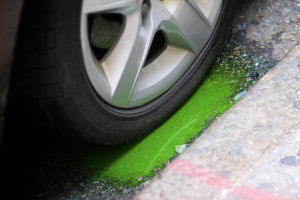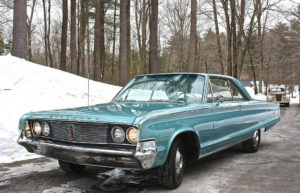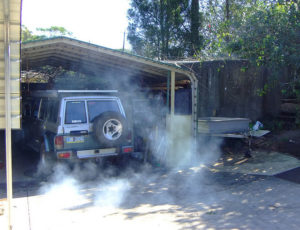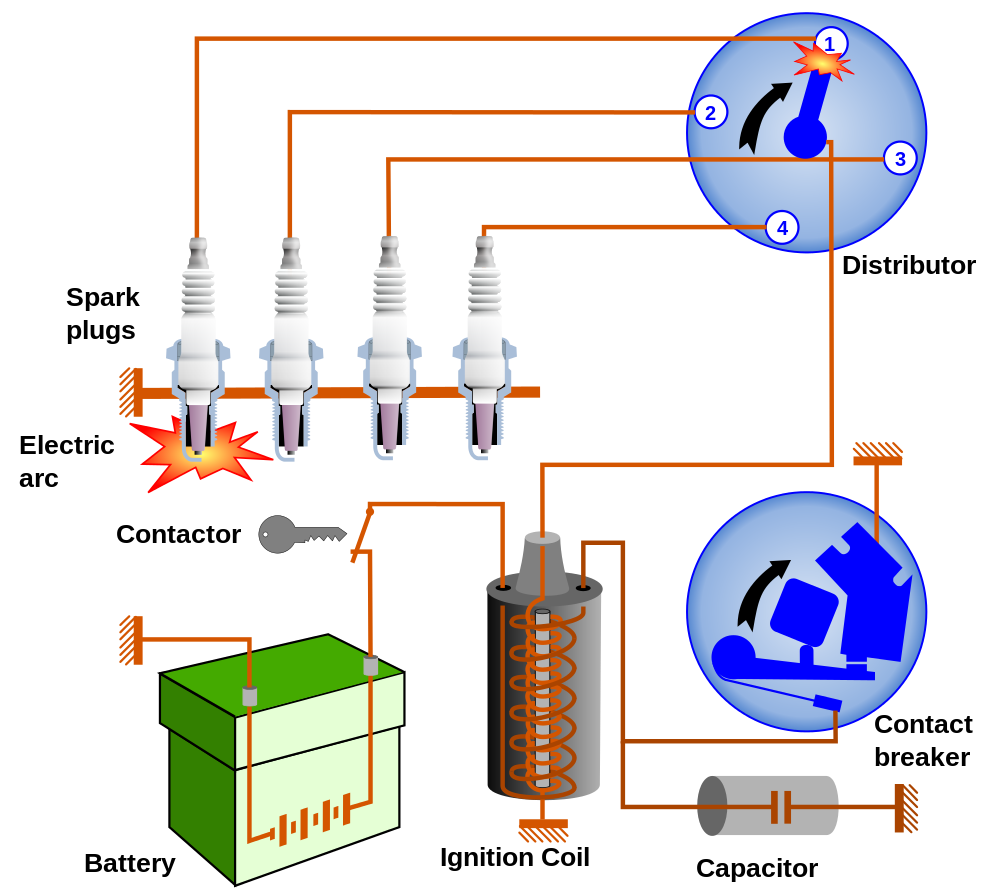Why is My Car Leaking Water?
Question: Why is My Car Leaking Water?
We were about to leave on a little road trip, and I had the car running in the driveway with the A/C on while we packed. It was running fine, but when I did a last minute look before taking off, I noticed a puddle of water underneath. I was afraid that the coolant was leaking, so we moved everything to the other car real quick and used that instead. What could cause a car to leak water like that, and is it safe to drive?
Answer:
There are three main reasons for “water” to show up on the ground under your car, and only one of them is really serious. That, of course, is a coolant leak, and it usually won’t look like water on closer inspection. There are exceptions, but we’ll get to those in a moment.
The other reasons your car can leak water are condensation from the air conditioning or the exhaust, neither of which are any cause for alarm.
What to Do When Your Car is Leaking Water Underneath
While the presence of water on the ground underneath your car doesn’t usually indicate any kind of a problem, it’s better to be safe than sorry—especially if you’re about to head off on a road trip. So if you do notice water leaking from your car, it’s important to make note of where it’s coming from and any kind of coloration that it has.

When enough antifreeze leaks under your car, it will be distinctly green, yellow or blue, and clearly not water. | Image courtesy Nick Harris, via Flickr (Creative Commons 2.0)
Here’s a quick rundown of what to do when you notice water under your car:
- Check the color of the water.
- Clear = condensation, unless you have straight water in your cooling system.
- Green, blue or yellow = coolant
- Check where the position of the puddle.
- Near the back of the engine compartment = A/C condensation
- Near the tailpipe or muffler = Exhaust condensation
- Anywhere else = probably wicking from one of the other locations
- Is your air conditioning on?
- If the a/c is on, then it’s normal to see some level of condensation puddle under your vehicle.
- Even if you don’t have the a/c on, you can still get condensation on hot days.
- Is it really cold out?
- Condensation from the exhaust is more common when it’s cold outside, but it usually goes away after your muffler warms up.
- If water continues to drip or spray out of the tailpipe even after driving for a while, there may be a more serious problem.
The Difference Between Coolant Leaks and Water Under Your Car
When you see fluid on the ground under your car, the first thing you need to do is verify what, exactly, it is. Although water under your car isn’t something you usually have to worry about, the presence coolant, or other fluids, can indicate a serious problem.
Depending on where you park your car, it may be quite easy, or very difficult, to tell what, exactly, you’re looking at. Coolant and water can look very similar on a dark, uneven surface, like an asphalt driveway or parking lot. You may be able to touch the fluid with a finger to tell whether or not it’s oily, but it can be harder to discern whether it’s coolant or plain old water.
The easiest ways to tell the difference between coolant and water under your car are the smell and the color of the fluid. Water is generally odorless, while antifreeze has a sweet smell. So if the fluid under your car smells sweet, it’s probably coolant.
If you place a drop cloth, paper, cardboard, or a pan where the liquid is dripping from, you should be able to collect enough to determine the color. If it’s colorless, then it’s just water, while green, yellow, or blue fluids could be antifreeze.
The only time actual water will leak from your cooling system is if someone placed water, instead of a mixture of water and antifreeze, in the cooling system. This is unlikely, since there aren’t any circumstances where straight water would be used like this, but it’s still worth checking. If you draw some antifreeze from your radiator, and it looks like straight water, that is a problem in and of itself.
What Causes a Car to Leak Water
Now that we’ve established the difference between coolant and water, we can take a look at the reasons for a car to leak water.
If you find that the fluid under your car is watery, but it has a blue, green or yellow color, and it smells sweet, then it’s actually coolant. In that case, the reason the car is leaking is that there is a problem with the cooling system.

Clear liquid under your car is usually condensation, while colored, sweet-smelling liquid is coolant. | Image courtesy Nick Morozov, via Flickr (Creative Commons 2.0)
Some of the most common reasons for a car to leak coolant include a corroded radiator, a coolant hose that has developed a hole, or a water pump with a leaky gasket or worn out bearing seal. In each of these cases, and many other similar instances, the fluid inside the cooling system leaks out onto the ground under the car, and the fix is to simply locate the worn out component and replace it.
Since the engine in your car depends on an operational cooling system to avoid overheating, coolant on the ground under your car can be a very serious problem. It’s usually okay to drive the car if you check and top off the coolant first, but you need to keep a very close eye on the temperature gauge.
If the fluid under your car is clear and odorless, then it’s probably just water from your air conditioning system. Depending on the local humidity and dew point, an air conditioning system can generate a distressing amount of condensation, which will drip steadily under your car.
In some cases, the drain tube can end up blocked, which causes this condensation to pool inside the a/c box. This can result in a sudden deluge of water, or even a musty smell inside the car. This can be avoided by removing the blockage from the drain tube, but condensation will continue to form whenever the air conditioning is running.
Water Leaking from the Exhaust
In addition to condensation from the air conditioning system, it’s also possible to get natural condensation in the exhaust. This usually happens when it’s cold out, and you first start your car after it has sat for a while. So if you notice some water sputtering out of your tailpipe on a chilly morning, there probably isn’t anything to worry about.
There are some situations where water in your exhaust is cause for alarm. For instance, a blown head gasket can result in coolant dumping into the combustion chambers and burning along with the air/fuel mixture. The result can be an extraordinary amount of water in the exhaust, or massive plumes of white mist.

Water sputtering from the exhaust is usually normal, but thick clouds of exhaust can indicate a problem. | Image courtesy Tim Maskall, via Flickr (Creative Commons 2.0)
If you suspect that your engine might be burning coolant, you should keep an eye on the coolant level. In the absence of any external leak, the coolant level should remain constant. So if you find that you have to add coolant regularly, there’s a chance that you’re dealing with a head gasket leak.
Is It Safe to Drive When Water Is Dripping under a Car?
Whether or not it’s safe to drive a car after you notice water dripping under it depends on where the water is coming from. So if you don’t have time to check the source of the water, or verify that it is water, then playing it safe and using other means of transportation may be a good idea. This is especially true if you’re about to head out on a long trip that could leave you stranded in the middle of nowhere.
If you are able to verify that the water dripping under your car actually is water, and it’s coming from somewhere near the back of the engine compartment, then it’s probably safe to drive. Since this type of “leak” is almost certainly just air conditioning condensation, there’s usually nothing at all to worry about.
Water from the exhaust is an edge case, since it usually doesn’t indicate a problem. So if there is water dripping from your tailpipe, your best bet is to check the coolant level—once the engine has cooled down—and make a decision at that point. If the coolant isn’t low, you’re probably fine, while low coolant may or may not indicate a problem.






